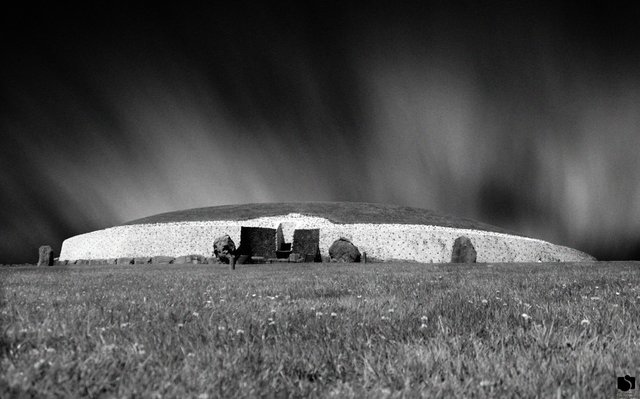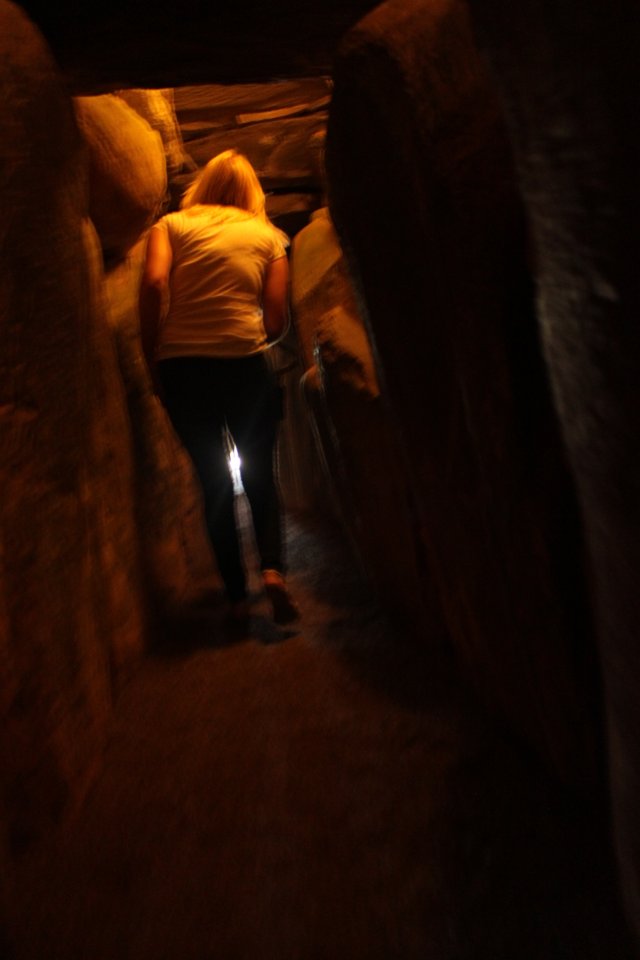Newgrange.
I Traveled to Newgrange. And what an Experience.
NikonD610
The Megalithic Passage Tomb at Newgrange was built about 3200 BC. The kidney shaped mound covers an area of over one acre and is surrounded by 97 kerbstones, some of which are richly decorated with megalithic art. The 19 metre long inner passage leads to a cruciform chamber with a corbelled roof. It is estimated that the construction of the Passage Tomb at Newgrange would have taken a work force of 300 at least 20 years.
from inside the chamber at Newgrange including the tri-spiral design on orthostat C10 which is probably the most famous Irish Megalithic symbol. It is often referred to as a Celtic design, but it was carved at least 2500 years before the Celts reached Ireland. At 12 inches in diameter the tri-spiral design is quite small in size, less than one-third the size of the tri-spiral design on the entrance stone
Above the entrance to the passage at Newgrange there is an opening called a roof-box. Its purpose is to allow sunlight to penetrate the passage and chamber at sunrise around the Winter Solstice. At 8:58am a narrow beam of light penetrates the roof-box and reaches the floor of the chamber, gradually extending to the rear of the passage. As the sun rises higher, the beam widens within the chamber so that the whole room becomes dramatically illuminated. After 17 minutes the sunbeam leaves the chamber and retreats back down the passage.
All are welcome to gather at Newgrange for the sunrise on the mornings around the Solstice (December 18th to December 23rd). Access to the chamber on the Solstice mornings is decided by lottery. The draw for Solstice 2010 will take place on September 24th 2010. The successful people will be notified by mid October. Fifty names are drawn, and each of the lucky winners can bring a guest, there are ten lottery winners and their guests in the chamber on each of the mornings around the Winter Solstice.
When Newgrange was built over 5000 years ago, the winter solstice sunbeam would have made its way to the back recess of the central chamber. Due to changes in the tilt of the Earth's axis the sunbeam now stops 2 metres from the back recess.
 ![074.JPG]
![074.JPG]
(












